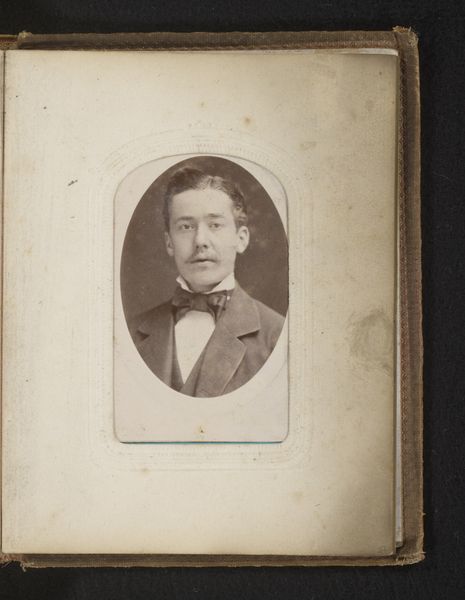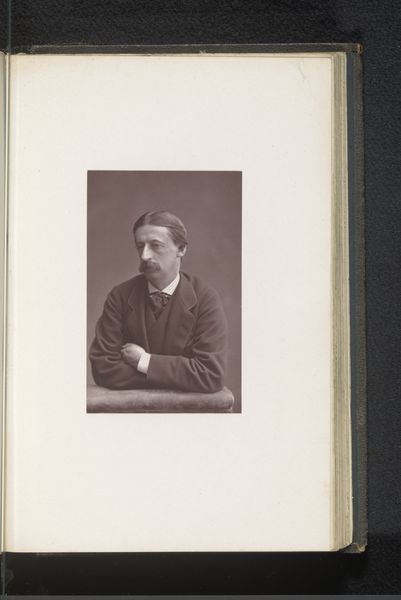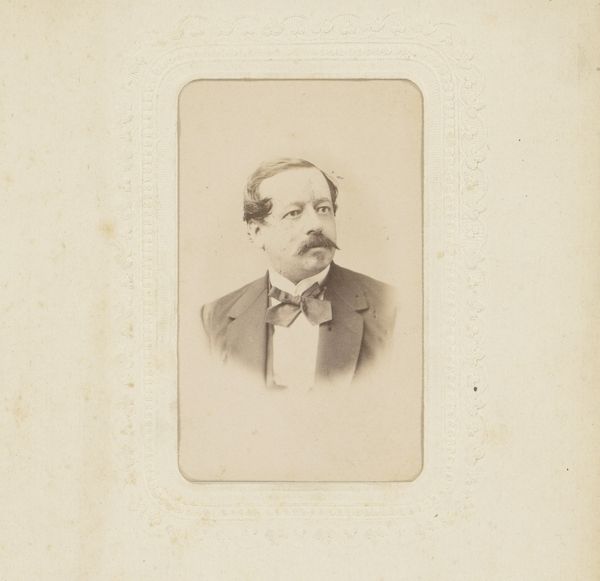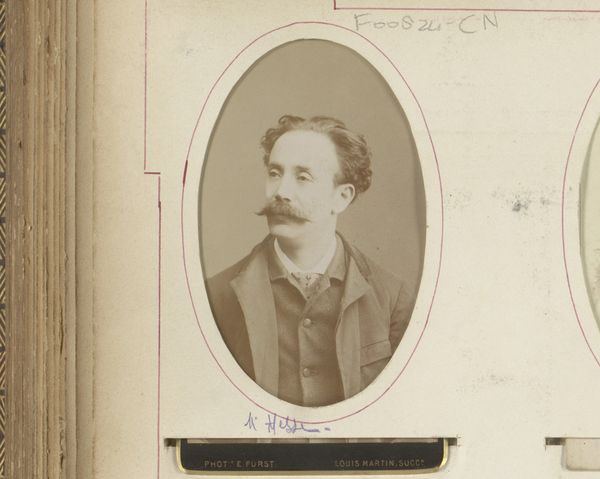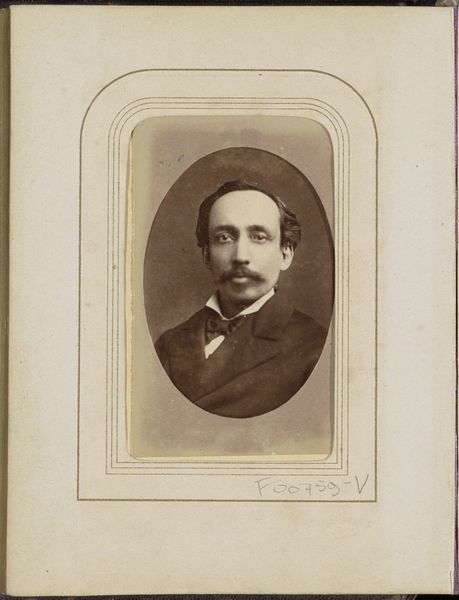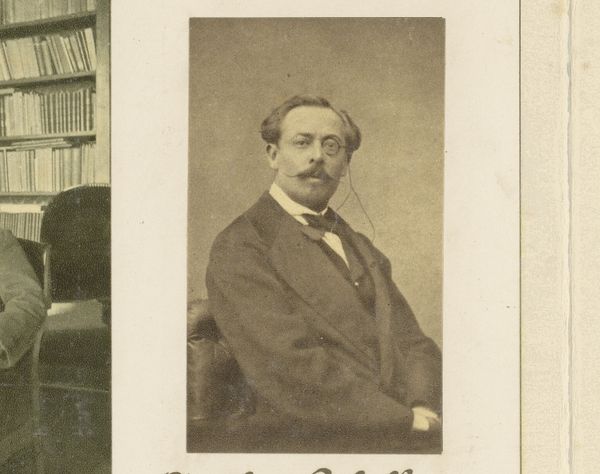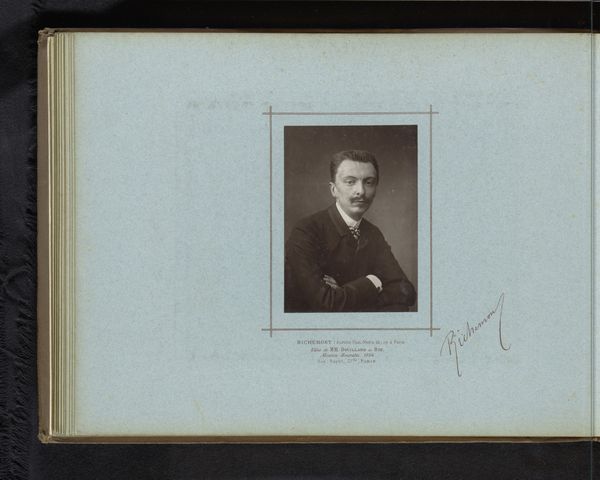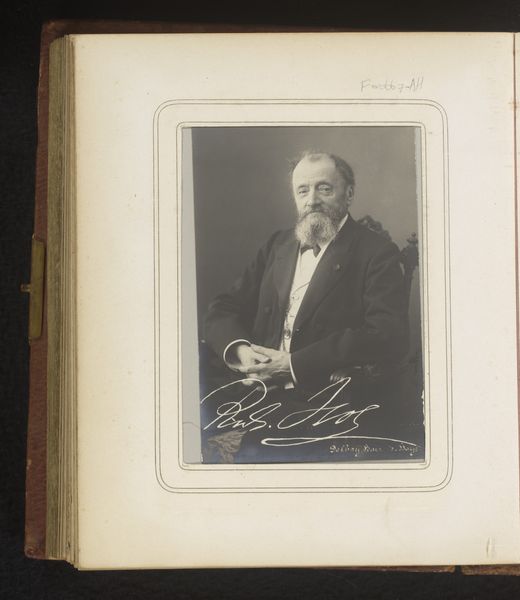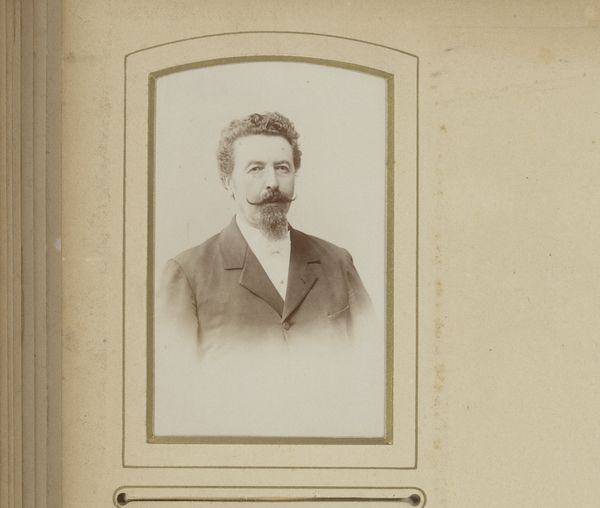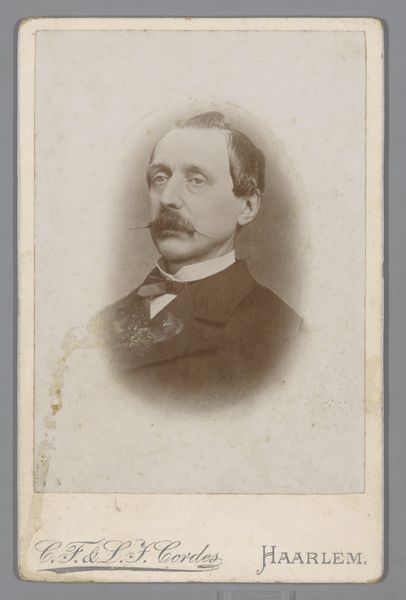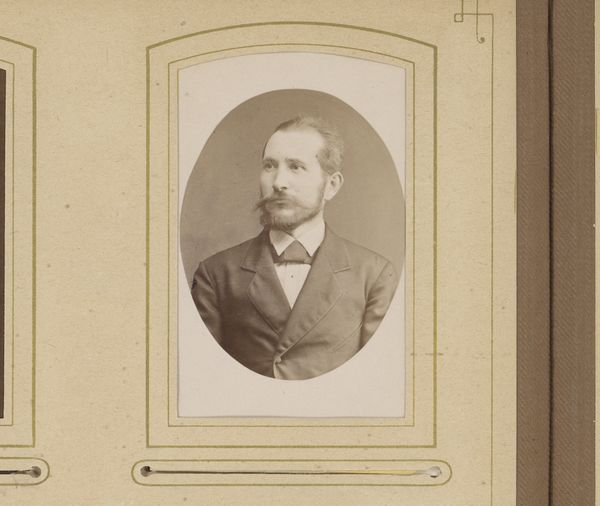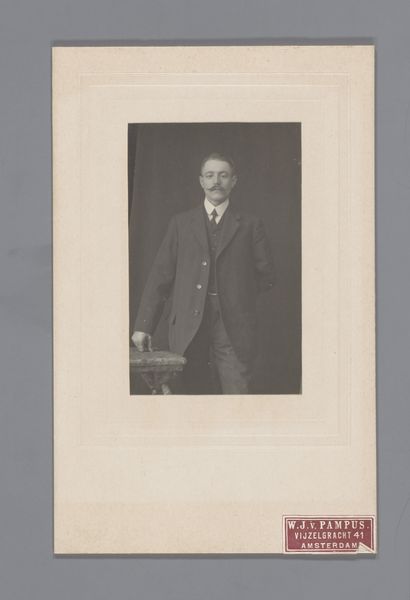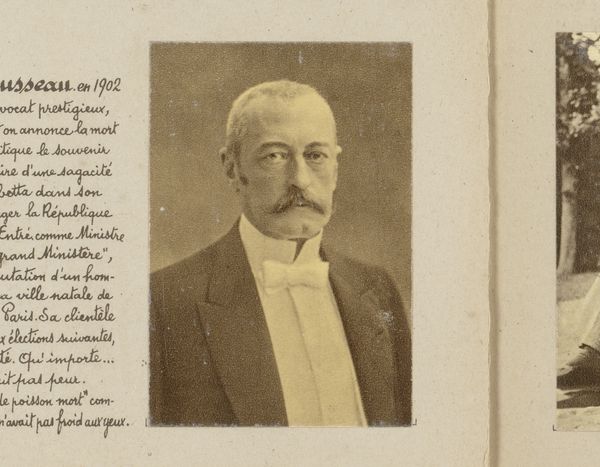
photography, gelatin-silver-print
#
portrait
#
photography
#
gelatin-silver-print
#
modernism
#
realism
Dimensions: height 134 mm, width 96 mm
Copyright: Rijks Museum: Open Domain
Curator: This is a gelatin silver print titled "Portret van Henri Trotta" created sometime between 1900 and 1920 by the photography studio of Delboy & Baer. What do you make of this, visually? Editor: A chap who takes himself rather seriously, I'd wager! The precision of that mustache! There's a stiff formality to it, a holding-of-the-breath quality, yet softened by the very evident humanity in his eyes. He feels immediately present, yet… far away. Curator: That perceived distance makes sense when considered within the conventions of early 20th century portrait photography. Posing was carefully orchestrated to convey dignity and status, part of a larger project in constructing and solidifying social identities. Editor: Yes, a public self very much on display. It does make you wonder about the unseen, the Henri Trotta who wasn’t trying to be Henri Trotta of Noteworthy Importance. Though, thinking about it, is "Realism" a loaded descriptor here, or any photographic portrait? I mean, is photography even able to really offer pure objectivity? Curator: "Realism," as applied to early photography, often masks a deliberate engagement with aesthetics. The arrangement, the lighting, and the choices made in the darkroom demonstrate artistry beyond mere replication of reality. Also, early modernist aesthetics involved an understanding of the psychological implications of these artistic choices for viewers. Editor: Which takes me back to those eyes. The way that the single lens rests gives it a little cheeky slant, you know? It undermines the strict composition a bit! There's also the oddest sensation of intimacy, of somehow getting closer to him by just seeing him a bit more than he wanted to reveal. It's as if the image hints at stories beneath the surface, like rings hidden within an old tree's age. Curator: And that, in many ways, encapsulates photography's evolving role within a quickly modernizing world—capturing moments, creating enduring symbols, and negotiating between how we see ourselves, and how we want to be seen. Editor: I'm struck how those formal portraits still ripple outwards across time, even now allowing us that oddly touching access into another person's life. Thanks for sharing that view.
Comments
No comments
Be the first to comment and join the conversation on the ultimate creative platform.
